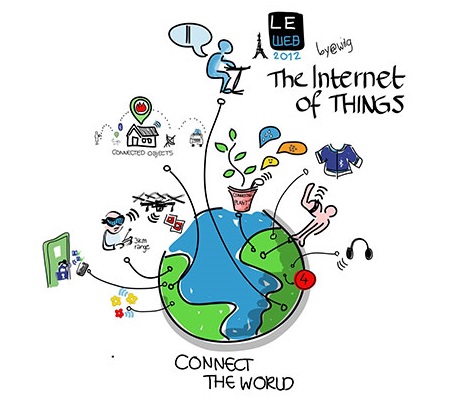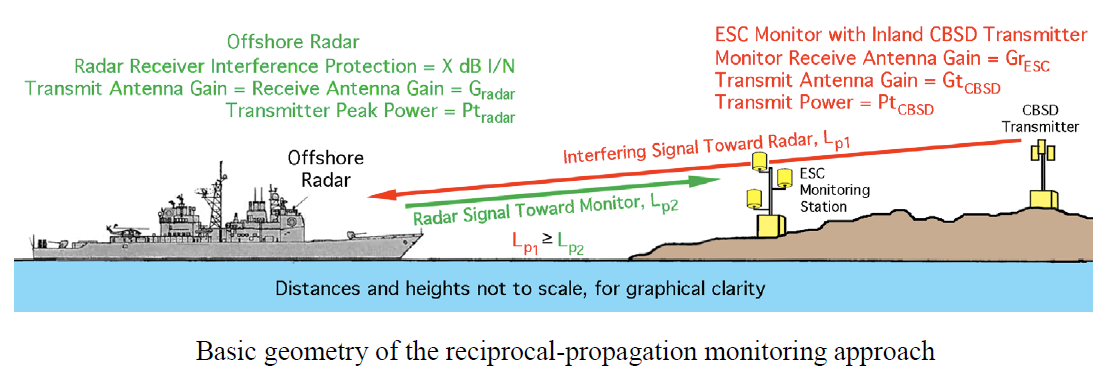NTIA Blog
New Report Outlines Possible Roadmap to Further Sharing of the 3.5 GHz Band
As we work to meet the President’s goal of making 500 megahertz of additional spectrum available for commercial wireless broadband, it has become clear that spectrum sharing will need to be part of the solution to meeting spectrum demand. Accordingly, NTIA is examining ways to improve the technology that would enable greater spectrum sharing between federal and nonfederal users.
In a new report released today, engineers from NTIA’s Institute for Telecommunication Sciences (ITS) and Office of Spectrum Management (OSM) propose a simple and robust method to implement spectrum sharing between commercial communications systems and federal radar operations in the 3550-3650 MHz (3.5 GHz) band.
Tackling the Digital Divide in the Pacific Northwest
As the headquarters for a number of technology industry pioneers, Seattle has a thriving digital economy. But even in this high-tech hub, 93,000 residents – or 15 percent of the city’s population – don’t subscribe to the Internet.
And across the state of Washington and the wider Pacific Northwest, there are still rural communities that lack access to adequate broadband. The problem is particularly acute for many Native American communities, including the Makah, Quinault and other tribes of the Olympic Peninsula and the Spokane and Colville Federated Tribes east of the Cascade Mountains.
From urban centers such as Seattle and Portland, Ore., to rural towns such as Toledo, Wash., civic leaders, industry officials and community activists are making progress in narrowing the digital divide. But the job is not done. That’s the picture that emerged from a daylong regional broadband workshop that NTIA hosted in partnership with the non-profit Next Century Cities in Seattle this week.
The event was the sixth in an ongoing series of regional workshops that NTIA is organizing as part of our BroadbandUSA program, which provides free hands-on technical assistance, toolkits, guides, webinars and other support to help communities expand local broadband deployment and adoption.
First Look: Internet Use in 2015
Reviewing the IANA Transition Proposal
Over the past two decades, the Internet has touched the lives of billions of people around the globe in profound ways. It has fueled economic growth, giving even the most remote villages the opportunity to sell their products in faraway lands. It has fueled innovation, connecting mobile gadgets and household appliances. And it has torn down barriers to speech, enabling diverse viewpoints to be heard across the political spectrum.
The Obama Administration is committed to doing everything within our power to preserve and protect the open, free-flowing global Internet, which has revolutionized the world. That’s why two years ago, we announced our intention to transition the U.S. government’s stewardship role of the Internet Domain Name System to the global multistakeholder community.
Since our announcement, the Internet community – made up of businesses, technical experts, academics and civil society – has risen to the challenge by developing a transition plan that has achieved broad community support. The community delivered that proposal to NTIA yesterday, marking the culmination of the largest multistakeholder process ever undertaken. Stakeholders spent more than 26,000 working hours on the proposal, exchanged more than 33,000 messages on mailing lists, and held more than 600 meetings and calls.
Spotlight on NTIA: Rafi Goldberg, Policy Analyst, Office of Policy Analysis and Development
This post is part of our “Spotlight on NTIA” blog series, which is highlighting the work that NTIA employees are doing to advance NTIA’s mission of promoting broadband adoption, finding spectrum to meet the growing demand for wireless technologies, and ensuring the Internet remains an engine for innovation and economic growth.
 Rafi Goldberg has been fascinated by technology since he was a child, when his father taught him how to program in BASIC on his family’s Apple II Plus.
Rafi Goldberg has been fascinated by technology since he was a child, when his father taught him how to program in BASIC on his family’s Apple II Plus.
Goldberg, who grew up on Long Island, kept up that interest as computers have advanced over the years. As an undergraduate at Tufts University near Boston, however, he pursued a different passion: public policy. Goldberg majored in political science and said he developed a strong connection with the Boston area, citing its strong sense of community and social activism. After working as an Issues Assistant on Deval Patrick’s 2005-2006 gubernatorial campaign and for the Governor's Office following Patrick’s victory, Goldberg moved to Washington in 2009 to pursue a Master’s degree in public policy from Georgetown University.
While at Georgetown, he realized that an ideal career would marry his interests in public policy and technology. He knew this combination must exist, but didn’t know where.
“And so I Googled it -- and found NTIA,” he says.
NTIA Launches Community Connectivity Initiative with Backing from Major Community Groups
Access to broadband means economic growth, new employment opportunities, and improvements in education, health care, and public safety. NTIA's recognition of this central fact of the 21st century is why we have engaged in a range of efforts to increase Internet access, adoption, and digital literacy, from the Broadband Technology Opportunities Program funded by the Recovery Act to the creation of the first public, searchable nationwide map of broadband availability.
As a continuation of those efforts, NTIA's BroadbandUSA program is partnering with national organizations representing millions of Americans in more than a thousand localities across the country to develop the Community Connectivity Initiative (Initiative). The Initiative will empower communities across the country by giving them tools to support and accelerate local broadband planning efforts. NTIA, in close collaboration with its partners, will create a comprehensive online assessment tool to help community leaders identify critical broadband needs and connect them with expertise and resources. The tool will provide a framework of benchmarks and indicators on access, adoption, policy, and use for communities.
The Need for Fair Use Guidelines for Remixes
The U.S. copyright system strives to create a careful balance between rights and exceptions. Businesses, libraries, consumers, and especially the creative community rely on a range of exceptions and limitations, such as fair use, on a daily basis. Fair use, a fundamental element of the U.S. copyright system, is a legal doctrine that permits the unlicensed use of copyright-protected works under certain circumstances. Because it is technology-neutral, it can be applied in a flexible manner during times of dynamic technological change.
"Fair Use/Fair Dealing Week" presents an opportunity to explore various aspects of this vital part of U.S. copyright law. We would like to add to the conversation by highlighting some recommendations that the Commerce Department's Internet Policy Task Force (IPTF) recently made in the area of remix and fair use.
At Commerce, the U.S. Patent and Trademark Office and NTIA teamed up to release in January a major new report on copyright policy. The White Paper on Remixes, First Sale, and Statutory Damages (White Paper) considers, inter alia, the roles of fair use and licensing arrangements as they apply to remixes.
Fostering Investment and Innovation in Smart Cities and the Internet of Things (IoT)
This blog was cross posted on Commerce.gov.
 The Internet of Things (IoT) – which involves connecting physical objects to the Internet – has the potential to transform our lives and society. Cities around the world are harnessing the power of these new digital tools to build “Smart Cities.” Local governments are deploying low-cost sensors to improve access to public services and collect data to better understand the needs of the populations they serve. At the same time, manufacturers are using sensors to optimize equipment maintenance and protect the safety of workers, and consumers are upgrading their homes with smart appliances, such as connected thermostats and refrigerators that tweet.
The Internet of Things (IoT) – which involves connecting physical objects to the Internet – has the potential to transform our lives and society. Cities around the world are harnessing the power of these new digital tools to build “Smart Cities.” Local governments are deploying low-cost sensors to improve access to public services and collect data to better understand the needs of the populations they serve. At the same time, manufacturers are using sensors to optimize equipment maintenance and protect the safety of workers, and consumers are upgrading their homes with smart appliances, such as connected thermostats and refrigerators that tweet.
The benefits of increased connectivity will be many: reduced congestion and fewer traffic accidents, remote patient monitoring and improved healthcare, and applications for emergency services, connected cars, and smart energy grids – to name just a few. Yet, we are hearing from innovators and the business community that a growing global patchwork of regulation threatens to increase costs and delay the launch of new products and services. That, in turn, could dampen investment.
Broadband Key to Smart Cities
This blog was cross posted on Commerce.gov.
 While the Internet has transformed everything from how we search for a job to how we communicate with friends and family, cities are looking to utilize digital technology to address stubborn challenges such as reducing traffic congestion, fighting crime, promoting economic development, and making local governments more accessible and efficient. To support such efforts, the Obama Administration this fall launched a new “Smart Cities” initiative and called for investing $160 million in federal research to help communities address 21st century challenges and support such initiatives as smart transportation systems that could adjust traffic management in real time or support expanded use of smart grid technology to better monitor peak energy usage.
While the Internet has transformed everything from how we search for a job to how we communicate with friends and family, cities are looking to utilize digital technology to address stubborn challenges such as reducing traffic congestion, fighting crime, promoting economic development, and making local governments more accessible and efficient. To support such efforts, the Obama Administration this fall launched a new “Smart Cities” initiative and called for investing $160 million in federal research to help communities address 21st century challenges and support such initiatives as smart transportation systems that could adjust traffic management in real time or support expanded use of smart grid technology to better monitor peak energy usage.
Why Sharing is the Answer to Rising Demand for Spectrum
Last week, I spoke at the 5th Annual Americas Spectrum Management Conference in Washington, D.C. It was a valuable opportunity to talk about NTIA’s approach to spectrum policy and our efforts to meet the growing need for spectrum of both industry and federal agencies.
The wireless industry has fueled tremendous innovation and economic growth with its use of spectrum. To maintain the growth of wireless broadband services, industry requires more and more spectrum. At the same time, critical missions performed by federal agencies – from predicting deadly storms to exploring space -- are requiring systems of greater complexity. The result: There is more demand for this finite resource than ever before.
It is clear that we can’t meet the challenges that arise from this increased demand by using the traditional methods of spectrum reallocation, which often take too long and cost too much money. Innovation in spectrum use must be met with innovation in spectrum allocation. The answer is spectrum sharing, a flexible and evolving option that is helping to optimize this resource to the benefit of both the public and private sectors.
Sharing offers increased access to both federal and non-federal users. It’s also more flexible and efficient than the typical process of relocating federal operations. And it’s an improving science – researchers at the Center for Advanced Communications (CAC) in Boulder, Colo., are focused on cutting-edge spectrum sharing research and development, experimentation and testing.

